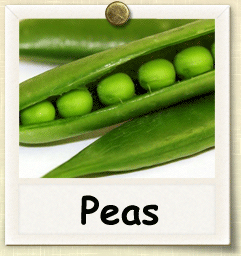|
Seeds > Heirloom > Legumes > Pea |
|
Heirloom Pea Seed |
|
|
| |
 |
|
Overview |
|
|
|
|
|
| |
|
| |
Like sweet corn, peas are at their tastiest immediately after harvest. Whether you choose shell or edible-pod peas, they grow best during spring and early summer when temperatures are between 60 F to 75 F. |
|
| |
|
|
| |
Growing Guide
GROWING NOTES
Yields best in full sun.
Prefers well-drained soil, average fertility, high in organic matter with pH 6.0 to 7.0. Widely adapted, but prefers cool, damp weather. Good soil structure is important. Avoid compacting soil by working it when it’s still too wet.
Leafless varieties have particularly fine texture.
MAINTAINING
Sow seed in spring as soon as you can work the soil - as early as late March or early April depending on how quickly the soil warms and dries. Peas planted in cold soil (40 F) are slow to germinate. Later plantings made when the soil is warmer (60 F or more) often catch up quickly with earlier plantings. Use raised beds if your soil is slow to drain.
Make additional plantings through early- to mid- May, or plant varieties with different maturity dates to increase the harvest period.
Plant seeds 1 to 2 inches deep, 1 to 4 inches apart in rows 18 inches apart. Or sow about 1 inch apart in a 3-inch-wide band (about 25 seeds per foot). Shallow planting is best when soils are cool and wet. Plant deeper if soil is dry. A quick way to seed is to make a furrow or trench with a hoe, place seed in the furrow, cover and firm. Do not thin.
Erect trellis for tall-growing, vining types at planting using chicken wire, brush or other suitable trellis material. If trellising, increase row spacing to 4 to 6 feet.
Keep soil moist, but avoid heavy watering during flowering, which can interfere with pollination.
Intercrop peas with fast-growing cool-season crops such as spinach or radishes. After final harvest, follow with late squash plantings or fall-harvested cool-season crops such as broccoli, leeks or potatoes.
Sow fall crops about 8 to 10 weeks before first frost date. Fall crops can be disappointing if hot weather persists. Powdery-mildew-resistant varieties are best for fall crops.
Do not use high-nitrogen fertilizers. Too much nitrogen will result in lush foliage but poor flowering and fruiting. Inoculation with rhizobia bacteria may be beneficial if peas have not been grown in the past.
Do not plant peas in the same place more than once in every 4 years. Avoid planting where in places where peas have suffered before from root rot.
|
|
| |
|
| |
|
|
| |
|
|
| |
Harvesting Guide
HARVESTING
SAVING SEEDS
|
|
| |
|
|
|
| |
|
|